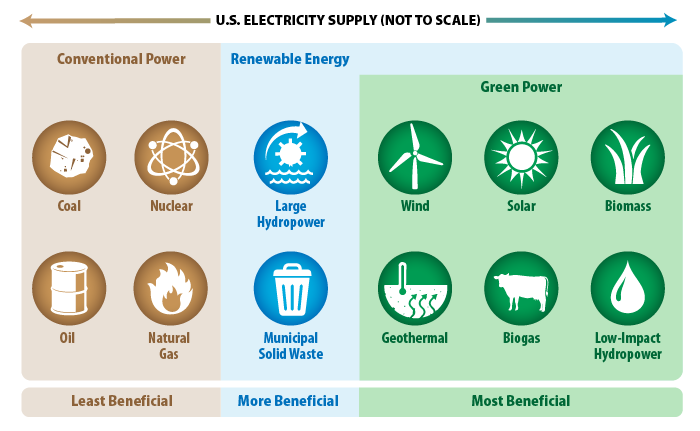What Is Green Power?
The U.S. energy supply is composed of a wide variety of energy resources; however, not all energy resources have the same environmental benefits and costs.
Green power is a subset of renewable energy and represents those renewable energy resources and technologies that provide the highest environmental benefit. EPA defines green power as electricity produced from solar, wind, geothermal, biogas, eligible biomass, and low-impact small hydroelectric sources. Customers often buy green power for its zero emissions profile and carbon footprint reduction benefits.
Renewable energy includes resources that rely on fuel sources that restore themselves over short periods of time and do not diminish. Such fuel sources include the sun, wind, moving water, organic plant and waste material (eligible biomass), and the earth's heat (geothermal). Although the impacts are small, some renewable energy technologies can have an impact on the environment. For example, large hydroelectric resources can have environmental trade-offs on such issues as fisheries and land use.
Conventional power includes the combustion of fossil fuels (coal, natural gas, and oil) and the nuclear fission of uranium. Fossil fuels have environmental costs from mining, drilling, or extraction, and emit greenhouse gases and air pollution during combustion. Although nuclear power generation emits no greenhouse gases during power generation, it does require mining, extraction, and long-term radioactive waste storage.
The following graphic depicts how EPA defines different types of energy resources based on their relative environmental benefits.

